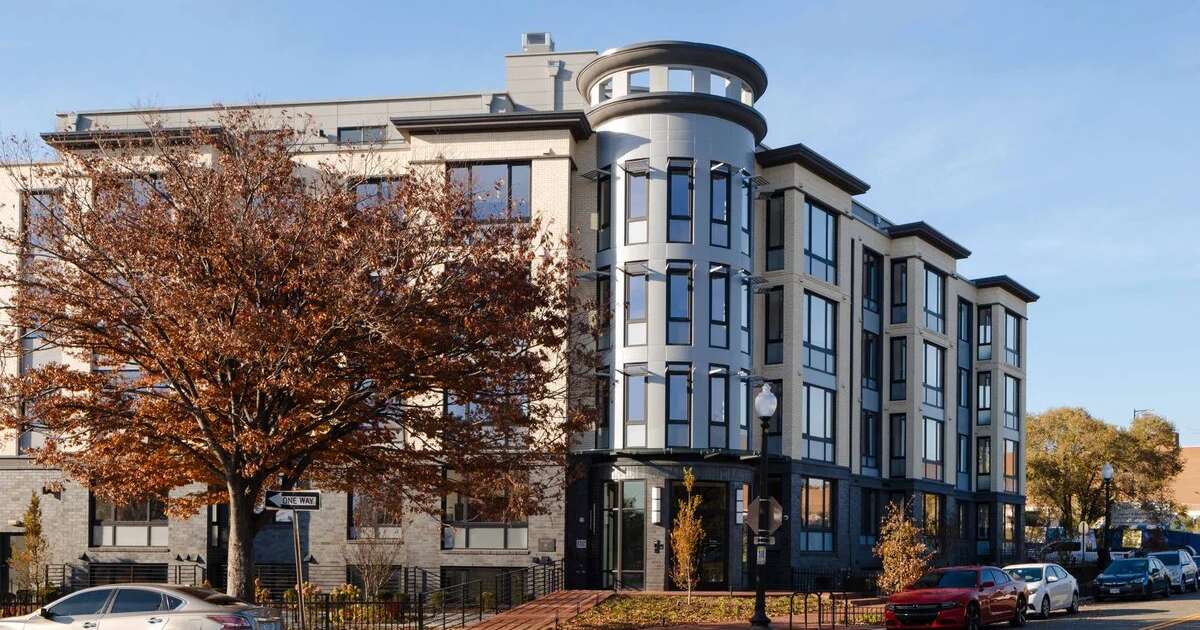Sports
Lakers at a crossroads: What went wrong, what's next with LeBron James, Darvin Ham

Midway through the fourth quarter of a “road” game against the rival LA Clippers on Feb. 28, with the Los Angeles Lakers having cut a lead that was once as much as 21 points in the fourth quarter down to five, a question arose within the team’s player-led huddle.
Why are we running plays to have LeBron James attack a former Defensive Player of the Year in Kawhi Leonard if the Clippers are willingly switching big man Daniel Theis onto him in screening actions?
The answer, provided by multiple players whom team sources say spoke up in the huddle, would provide the key to that night’s comeback win in those final five-plus minutes.
Anthony Davis would set the high screen to prompt the switch, with D’Angelo Russell as the “high man” and Rui Hachimura in the strong-side corner. If a double-team came James’ way, Russell would flash across the lane and open up a potential dunk for Davis or a 3-pointer for Hachimura in the corner. The plan worked to near perfection, with Theis taking over for Leonard six times down the stretch and James picking the opposition apart from there as the Lakers finished the game on a 15-6 run to win 116-112.
During this fourth quarter, in which James scored or assisted on 11 of the Lakers’ 13 field goals, seven weeks after the job security of second-year coach Darvin Ham had become a major storyline of their season, the irony of the Clippers’ ending wasn’t lost on several Lakers players. They had, in their minds, won the game on their own.
It had been one step forward, two steps back for the Lakers over the two-plus months since their In-Season Tournament championship. But this, as some players saw it, was a sign of the locker room coming together in an attempt to salvage a challenging situation with the head coach with whom they often didn’t connect. Their self-empowerment, it seemed, was born out of the perceived absence of effective direction from the coaching staff.
This moment, one of many in which these Lakers felt compelled to find their own solutions, summed up a season that began with high hopes after their Western Conference finals appearance against Denver last year, but ended with another ouster at the hands of the Nuggets. And by the time the Lakers’ season ended in Game 5 against Denver on Monday night, when Jamal Murray’s second game-winner of the first-round series sent the Lakers home less than a year after the Nuggets swept them last May, there were strong signs within the organization that Ham would be deemed most responsible.
PLAYOFF. JAMAL. MURRAY.
His SECOND GAME-WINNER of the series sends Denver to Round 2 🚨 https://t.co/ZiNxo5iNc0 pic.twitter.com/b3AQoCUQIA
— NBA (@NBA) April 30, 2024
The Lakers’ unflattering finish leaves Ham’s future as head coach in serious peril, multiple league and team sources tell The Athletic, with some stakeholders indicating it’s highly unlikely he’ll return. The plan is to reassess everything that went wrong in the coming days before making a final decision. In 2022, Ham signed a four-year deal in the range of $5 million per season, so the team would be assuming the remainder of his deal if he is fired.
“It seemed like every time we hit a rhythm, somebody, a key piece, would fall out of the lineup. It is what it is, man,” Ham said after the Game 5 defeat. “I’m not going to feel sorry for myself, for ourselves. It’s an unbelievable franchise to represent. I couldn’t ask for a better governor, a better president of (basketball operations) in Rob Pelinka and Jeanie Buss. But I’ve seen a lot my first two years in this seat. I’ll continue to work, to get better and to control what I can control.”
The Lakers believed this roster was built for much more than a first-round defeat. Vice president of basketball operations and general manager Rob Pelinka and his staff retained key free agents, such as Austin Reaves, Russell and Hachimura, extended Jarred Vanderbilt and believed the core had promise to make a title run around Davis and James. Throughout the series and most of the season, however, team officials and players believe Ham’s fluctuating rotations, game plans and lack of adjustments led to an underperforming group. It created discontent within the locker room, which became palpable across the franchise.
The Lakers’ blown 20-point lead in Game 2 of the Denver series served as a final straw of sorts. After a successful first year as coach in which he showed signs as a leader of players, the tide turned for Ham this season. There was tremendous respect for Ham as a person, and players had an appreciation for his pro career and time as an assistant coach in Atlanta and Milwaukee. But, as one player said recently, “We need to be coached, too.”
Now, the Lakers face two franchise-defining questions.
Will LeBron stay in Laker Land?
LeBron James has a $51.4 million player option for the 2024-25 season. (Garrett Ellwood / NBAE via Getty Images)
Coming off his 21st NBA season, James is expected to play up to two more NBA seasons, one source briefed on his thinking said. He has a $51.4 million player option for the 2024-25 season. Two more seasons would take James through the 2026 All-Star Weekend in Los Angeles.
It’s anticipated James, ahead of his June 29 option date, will want to see how the Lakers manage the offseason and their approach to building the roster around him and Davis. Both routes — opting in and opting out — are on the table for James. He places importance on having comprehensive and well-rounded depth around him, which could mean the Lakers explore trades in the lead-up to that player option, sandwiched between the NBA Draft, which begins June 26, and the opening of free agency on June 30.
What’s more, team sources say the Lakers are very open to the prospect of helping LeBron fulfill his dream of playing with his son Bronny by potentially drafting him.
“My last year will be played with my son,” James famously told The Athletic in 2022.
LeBron changed his message in January 2023, telling ESPN that he would consider that family goal fulfilled so long as he shared the floor with Bronny “either in the same uniform or a matchup against him.” In the wake of Bronny’s cardiac arrest episode in July, he had an uneven freshman season at USC. His hard-to-handicap NBA future remains a topic of great debate, but rival teams believe it is not a matter of if he is a draft pick, but whether the selection range, location and fit are enough to keep him in the draft.
As for his father, the Lakers want him back — badly — and the potential of the 39-year-old LeBron returning remains the most likely scenario. Lakers owner Jeanie Buss, in particular, believes James’ return is of paramount importance to their plan. This franchise has always been buoyed by the stars, and James’ ability to still play at an elite level at his advanced age has only strengthened the desire to have him retire in a purple-and-gold jersey one day. And after six seasons together in which there has been no shortage of ups and downs, Buss and James, team sources say, have a relationship that is better than ever these days.
The Lakers, team sources say, would be open to discussing any deal that involves James coming back — including even the maximum three-year, $164 million extension they can offer. Playing through a three-year deal would put him at 42 by the end of the contract.
“He’s not the problem here,” one high-ranking Lakers official said of LeBron.
He is, in fact, still seen as a major part of the solution.
It bodes well for the Lakers that the relationship with James has stabilized in recent months. That didn’t appear to be the case in late January, when the Lakers fell below .500 with a loss to Atlanta and James’ hourglass tweet sparked so much speculation about his frustrations. Then, there were the series of pro-New York Knicks signals he sent out just days later during the team’s East Coast trip, all reminders that the leverage was his come summertime.
But when James chose not to engage with the Warriors at the trade deadline in February, with Golden State owner Joe Lacob known to have opened that door during a trade discussion that ESPN first reported, the Lakers saw it as a sign that he truly valued being part of the Lakers organization. A month later, James’ cordial courtside visit with Buss and her longtime Lakers partner Linda Rambis was as good a sign as any that all was well in their relationship. But James has made a habit of keeping his options open for most of his storied career, and this time around will be no different.
“I just want to get home to the family,” James said after Game 5 when asked about his future. “Honestly, one of my boys is trying to decide if he’s going to enter the draft or go back to school. Another kid is playing AAU ball right now. My daughter is playing volleyball. My wife is doing so many great things. So it’s about family right now. Then, in a couple months, I got to go to Vegas for training camp. So I need to rest my body for (USA Basketball).”
“I’m not gonna answer that,” he said later when asked if he thought Game 5 might have been his last game as a Laker. “I appreciate it.”
The Lakers are expected to be aggressive in the market, with Atlanta’s Trae Young one of the more intriguing names out there. The Lakers’ room could be split on him as they try to make the most of this precious time in which James and Davis are still playing at an elite level. He’ll be one of many names that is expected to be discussed.
The team needs backcourt help, particularly after Russell’s up-and-down play against the Nuggets for a second consecutive season. His performance leaves a significant question about his likelihood to return, even with an $18.7 million player option for next season. The Lakers will be armed with three first-round draft picks eligible to be moved on draft night, plus tradeable contracts tied to Reaves, who has strong value across the league, and Hachimura.
Where did Darvin Ham go wrong?

Darvin Ham’s relationship with the Lakers’ players deteriorated over the course of the season. (Jerome Miron / USA Today)
In the eyes of the Lakers’ top decision-makers, the combination of last season’s West finals appearance and December’s In-Season Tournament championship were signs this roster was worthy of contention. The pressure was on Ham to make the most of it. But just as the momentum started to build, with the stability the organization had longed for in Ham’s tenure within reach, the Lakers’ skid began.
They lost 10 out of 13 games after the In-Season Tournament, with two four-game losing streaks during that stretch and losses to teams such as San Antonio, Chicago, Memphis and Miami (without Jimmy Butler) that they would later pay so dearly for in the standings. The disconnect between Ham and his locker room was detailed by The Athletic in an early January report, but the ownership support that he spoke openly about at the time played a pivotal part in the organization’s choice to continue with him on the bench.
The Lakers were largely healthy during that stretch — only Russell (four games) and Gabe Vincent (12 games) missed notable time from their normal rotation. Outside of that period, the team went 44-25, a 52-win pace. If the Lakers had won a few more of those games during that stretch, they would’ve finished at least sixth in the West, which would’ve kept them out of the Play-In Tournament and from facing Denver in the first round.
During the 13-game skid, the Lakers used six starting lineups, including two variations of an all-wing lineup — James, Davis, Taurean Prince, Vanderbilt and either Cam Reddish or Hachimura — for five games (the team went 2-3). The decision to bench both Reaves and Russell, the team’s consensus third- and fourth-best players, did not sit well with many within the organization and locker room, according to team and league sources.
Ham’s decision was viewed as a panic move that backfired, a divergence from the team’s stated goals of developing reps and continuity with the core players and groups from last season. Instead, those lineups and groupings didn’t play as much as they could have, even as bench or closing lineups.
Before Hachimura became the full-time starter on Feb. 3, he had only played alongside James, Davis, Reaves and Russell in six of a potential 26 games. Vanderbilt only played 32 minutes alongside James, Davis, Reaves and Russell.
Injuries played a role, too. Vanderbilt missed 53 regular-season games due to injuries. Vincent missed 71. Christian Wood missed the final 26 games after the All-Star break. Hachimura missed 14. At the same time, the Lakers’ four best players – James, Davis, Reaves and Russell – each played in at least 71 games. Ham avoided those lineups — mainly Vanderbilt and Hachimura alongside James and Davis — for reasons that are still unclear.
The buzzword of the Lakers’ offseason and training camp was continuity. The Lakers believed their supporting cast around James and Davis — specifically, Reaves, Russell, Hachimura and Vanderbilt — complemented the stars and one another well. All four players were in their mid-to-late 20s and under contract for at least one additional season. The plan was for the Lakers’ core to be those six players plus Vincent.
Four of the five starting spots were cemented: Russell, Reaves, James and Davis. The fifth spot was going to be decided in training camp, with Vanderbilt, the incumbent starter entering the 2023 postseason, the front-runner to retain his starting spot. But things went awry when Vanderbilt suffered a heel injury during the first preseason game.
That led to Ham and the coaching staff starting Prince, who had been signed to a one-year, $4.5 million contract as a 3-and-D wing and was viewed as the likely eighth or ninth man. Prince inadvertently became the avatar for the Lakers’ issues, as his outsized role often came at the expense of the core players and led to smaller lineups, which performed worse statistically. The Lakers were just 24-25 with Prince as a starter and 28-8 in the 36 games he played fewer than 25 minutes (he missed four games due to injury). He finished last on the team in plus-minus in the regular season.
There was a sense among people within the organization that Prince and Reddish — a 24-year-old minimum contract signing — were given opportunities to fail and play through their mistakes during the regular season, a luxury that Reaves, Russell, Hachimura and others weren’t afforded.
The confusion toward Ham’s rotation even included his decision to split minutes between Vincent and February post-buyout signing Spencer Dinwiddie in the final weeks of the regular season and playoffs. This broke the rhythm of Dinwiddie as the primary backup guard — as he shot 39.7 percent from 3-point range and was among the team’s plus-minus leaders after joining — and led to the question as to why the staff did not elect to go all in with one of them instead of attempting to force small stretches for each.
The injuries to Vanderbilt and Vincent certainly hindered the rotation, but the benchings of Reaves, Russell and Hachimura, and the increased roles of Prince and Reddish, led to the question that would hurt Ham’s standing in the end: What might have happened if the Lakers simply played their best players from opening night?
After they moved Hachimura into the starting lineup, the Lakers closed the regular season 19-6, a 62-win pace. They had the fourth-best record in the West and fifth-best in the league after Feb. 1. They also posted the league’s third-best offense over that stretch. That success, however impressive, was seen by some as an indictment of Ham’s rotation choices that had come before it.
The frustration, which was sometimes so apparent that even opposing players would be made aware of it while sharing the court with the Lakers, didn’t stop at just the lineups and rotations. Players openly criticized Ham’s willingness to allow below-average shooters to get wide-open 3s and believed the team was slow to adjust once a poor shooter was in a rhythm.
“Everybody, no matter what their numbers are, shoots well against us,” Davis said on Jan. 11 after an 18-point loss to the Phoenix Suns. “If a guy is shooting 10 percent, he’s gonna shoot 40 (percent) against us. Just knowing that. There hasn’t been a time where the numbers have told the truth to us when we’ve played guys.”
Ham often referenced “the numbers” supporting the Lakers ignoring or aggressively helping off certain shooters.
During the regular-season matchups with the Nuggets, players privately complained about not feeling prepared for Denver’s late-game offense. Those criticisms continued into the playoffs, leading to an awkward back-and-forth between Davis and Ham between Games 2 and 3.

Darvin Ham’s response to Anthony Davis’ comments after Game 2 of the Nuggets series was another flashpoint in the season. (Garrett Ellwood / NBAE via Getty Images)
In Game 2, Davis had a career-best playoff half, making 11 of his first 12 shots. Overall, he made 14 consecutive field goals after missing his first. But after the Nuggets called timeout, trailing by 20 points with 10 minutes remaining in the third quarter, they made an important defensive adjustment that would alter the course of the game and, ultimately, the series.
They changed Nikola Jokić’s defensive assignment from Davis to Hachimura, which, in turn, moved Aaron Gordon from James to Davis and Kentavious Caldwell-Pope from Russell to James. Davis only went 1-of-5 the rest of the game, largely standing in the corner as the Lakers instead chose to run James-Hachimura pick-and-rolls to target Jokić.
Following the loss, Davis called out the team’s in-game execution.
“We have stretches where we just don’t know what we’re doing on both ends of the floor,” Davis said. “And those are the ones that cost us.”
Though it was a general criticism that appeared to be addressed to both teammates and coaches, Ham defended himself and the coaching staff when asked about the comments at the next practice.
“I mean, I just think sometimes when plays don’t turn out the way you think they should, then the frustration sets in a little bit,” he said. “But I don’t think it’s [from] us not being organized. I think I have incredibly talented coaches all along my staff. We pride ourselves, whether it’s a practice, a shootaround, a film session, a game or whatever, we pride ourselves on being highly efficient and organized. I just chalk that up to being frustrated. It’s an emotional game, the way it ended and all of that. But I’ll agree to disagree on that one.”
Ham’s response was viewed as an unnecessary amplification of Davis’ comments, according to team sources. Ham could have downplayed the remark or even agreed with his superstar’s criticism of the team’s execution after that blown 20-point lead. But Ham instead talked up his coaching staff and dismissed the sentiment behind Davis’ comments as simply frustration. The notion of engaging in a public back-and-forth with a franchise cornerstone in Davis, who signed the richest annual contract extension in league history in early August, was seen internally as ill-advised.
There was a sense internally that while Ham didn’t always need to win the news conference, he was far too often losing it.
Following the Lakers’ Jan. 5 loss to the Grizzlies, their fourth consecutive loss to begin 2024 that dropped them to 17-19, Ham said, “I’m tired of people living and dying with every single game we play. It’s ludicrous, actually. It’s like, c’mon, man. This is a marathon.” The ethos of that quote did not sit well with the fan base, which became increasingly critical of Ham during the season. As Game 3 against Denver at Crypto.com Arena wound down and the Lakers fell down 3-0 in the series, a segment of Lakers fans started chanting “Fire Darvin!” twice.
And players took notice of the public comments, as well. They eventually responded with subtle barbs of their own, noting the team’s lack of preparation for certain players and schemes and repeatedly complimenting opposing coaches and talking up their adjustments.
“We’re a team that we do a lot of things on the fly,” Russell said at practice after Game 2. “We adjust, and we go from there. A lot of the stuff that we’re doing is stuff that we’re not familiar with either. We don’t prepare for Jokić every game. So for us, it’s something that we’re trying and figuring out as we go.”
In the eyes of several team sources, Ham rarely, if ever, publicly cited the fault of his schemes, game planning or rotations. Ham and his representation did not respond to a request for comments for this story.
“I’ve always thought that a team is the reflection of its coach in terms of the mental stability, the emotional stability,” Ham said before Game 3.
That comment might prove prescient in the worst of ways for Ham, the former player who came the Lakers’ way after 11 years as an assistant and was faced with the immediate pressure to lead the franchise to its 18th title. That’s the harsh reality of being a coach on a LeBron James-Anthony Davis team, and Ham’s inability to push the program in that direction has caused serious angst from the top of the organization on down.
“It’s been a hell of a two years sitting in this seat, I’ll tell you that,” Ham said after Monday’s Game 5 defeat. “It’s been a hell of a two years.”
The Lakers’ most powerful people don’t like what they see in the mirror right now, and so another offseason of hard decisions awaits.
(Illustration by John Bradford / The Athletic. Photos via Garrett Ellwood, Justin Ford and Garrett Ellwood / Getty Images)

Sports
Shaun White admits itch to return to competitive snowboarding is 'always there'
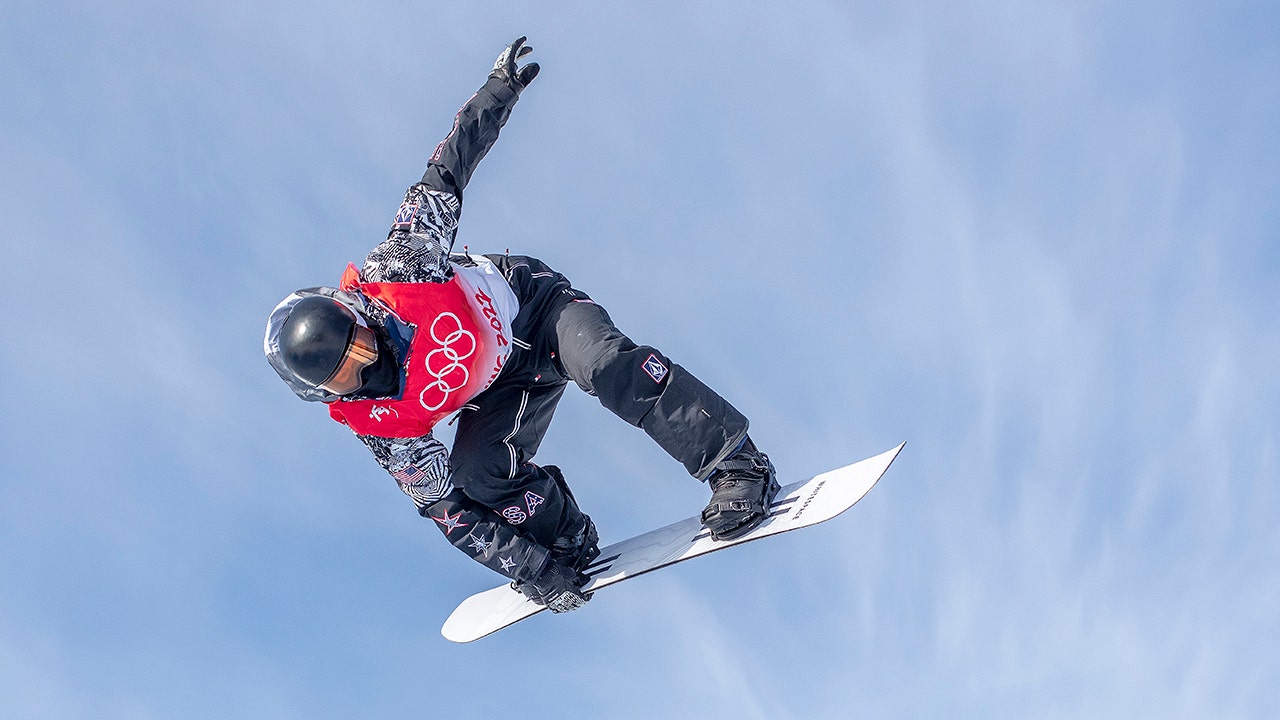
Shaun White retired from competitive snowboarding following a fourth-place finish in the halfpipe event at the 2022 Winter Olympics.
White was only in his mid-30s when he decided to step away from the spot he dominated for so long. He won three gold medals at the Olympics dating back to 2006 in Italy, not to mention the 10 X Games gold medals he racked up during his illustrious career.
Shaun White of the United States in action in the Men’s Snowboard Halfpipe Final at Genting Snow Park during the Winter Olympic Games on Feb. 11, 2022 in Zhangjiakou, China. (Tim Clayton/Corbis via Getty Images)
With the trend of great athletes possibly second-guessing retirement, White admitted in an interview with Fox News Digital that the itch to return to snowboarding is “always there.”
“It’s just kind of maintaining this sort of like, well, ‘you stopped for a reason.’ And I spoke to a lot of athletes and they were just like, ‘It never goes away,’” he said. “You’re like watching TV and (say) I could’ve made that catch. They’re just like that’s just embedded and ingrained in your for so many years of doing it. But there’s like this amazing life waiting for you outside of that.”
White said he picked the brains of some famous athletes about how they look at their careers when they are off the field or out of the pool.
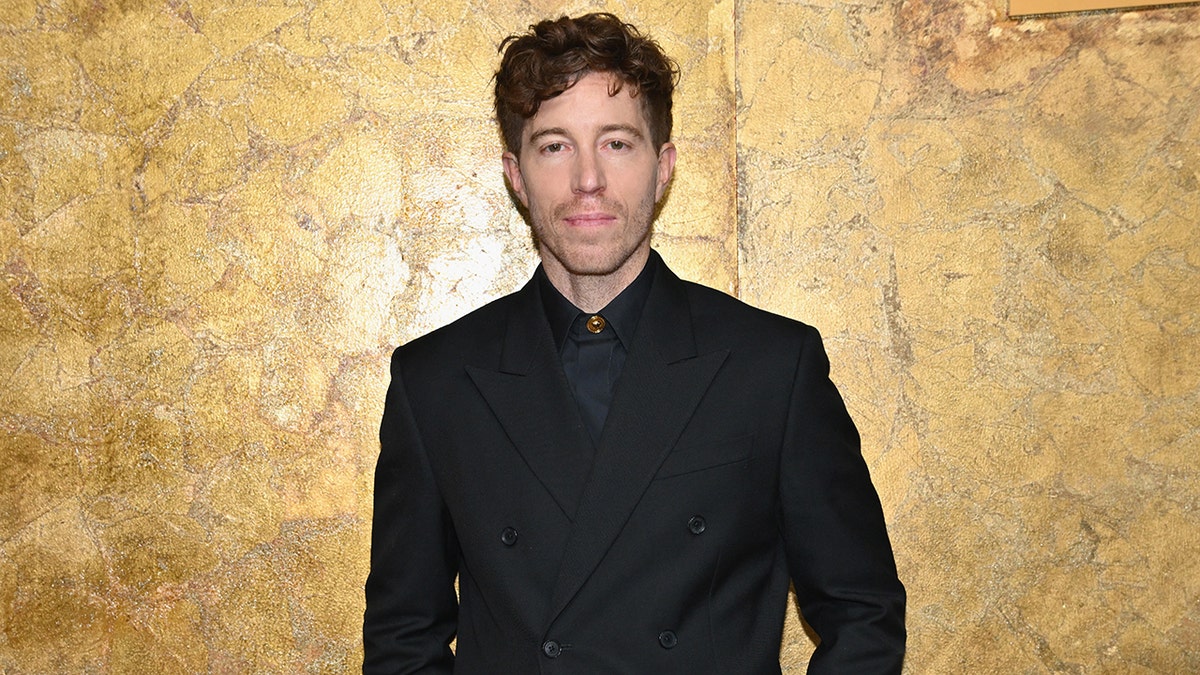
Shaun White arrives for The Albies hosted by the Clooney Foundation at the New York Public Library in New York City on Sept. 28, 2023. (ANGELA WEISS/AFP via Getty Images)
EX-OLYMPICS STAR SHAUN WHITE RIDES WITH CVS FOR NEW SNACK AND BEVERAGE LINE: ‘THEY’VE REALLY UPPED THE GAME’
“Guys like Michael Strahan, Michael Phelps and I even ran into Tom Brady, which was actually great because he did the, ‘Hey I’m gonna come back’ and yeah it’s hard to let go of that feeling. And it was cool to talk to him about (it) like, ‘Man, we did it. We had our moment and we can celebrate that because the history books will show,’” White said.
He told Fox News Digital he is developing a solid career outside of competition but is still practicing tricks. While he may not be competing against other nations come 2026, he expects to be back in Italy to cheer on his friends.
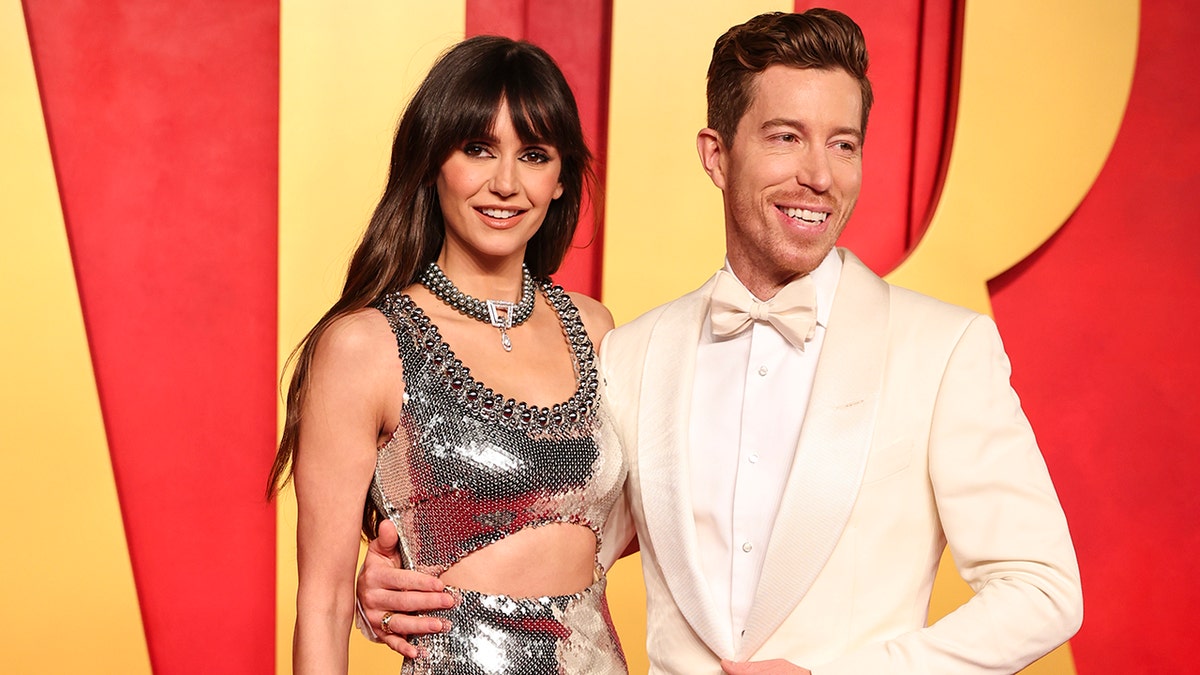
Nina Dobrev and Shaun White at the 2024 Vanity Fair Oscar Party held at the Wallis Annenberg Center for the Performing Arts on March 10, 2024 in Beverly Hills, California. (Christopher Polk/Variety via Getty Images)
“It’s definitely fun, and I’ve still been able to get back out on the mountain and work on tricks and have fun and ride. I have my own brand called White Space and we do boards and outerwear and all this stuff. I’m still involved in the sport through that. I was still testing products. We have now young riders that we sponsor. It’s been cool but yeah definitely, like, I’ll be there probably on the microphone or something for that Games. Definitely cheering my friends on.”
Follow Fox News Digital’s sports coverage on X and subscribe to the Fox News Sports Huddle newsletter.
Sports
Thursday's high school boys' volleyball playoff results and pairings

SOUTHERN CALIFORNIA REGIONALS
Thursday’s Results
Semifinals
Division I
Loyola d. Corona del Mar, 25-22, 25-16, 25-18
Mira Costa d. Torrey Pines, 25-16, 25-18, 25-18
Division II
St. Margaret’s d. San Clemente, 25-19, 27-25, 21-25, 25-20
Redondo Union d. Carlsbad, 25-19, 25-20, 30-28
Division III
La Costa Canyon d. Sage Creek, 19-25, 25-23, 25-18, 25-19
West Ranch d. Mission Vista, 23-25, 25-21, 32-30, 25-17
Division IV
Arroyo Grande d. Foothills Christian, 24-26, 25-21, 25-20, 22-25, 18-16
Grant d. High Tech San Diego, 25-22, 25-16, 21-25, 20-25, 19-17
Saturday’s Schedule
(All matches at 6 p.m. unless noted)
Finals
Division I
#2 Mira Costa (37-4) at #1 Loyola (31-1-1)
Division II
#5 St. Margaret’s (34-4) at #2 Redondo Union (31-8)
Division III
#4 La Costa Canyon (17-19) at #2 West Ranch (27-11)
Division IV
#2 Grant (33-8-2) at #1 Arroyo Grande (21-12)
Sports
EA Sports College Football 25 cover athletes, release date revealed after 11-year hiatus
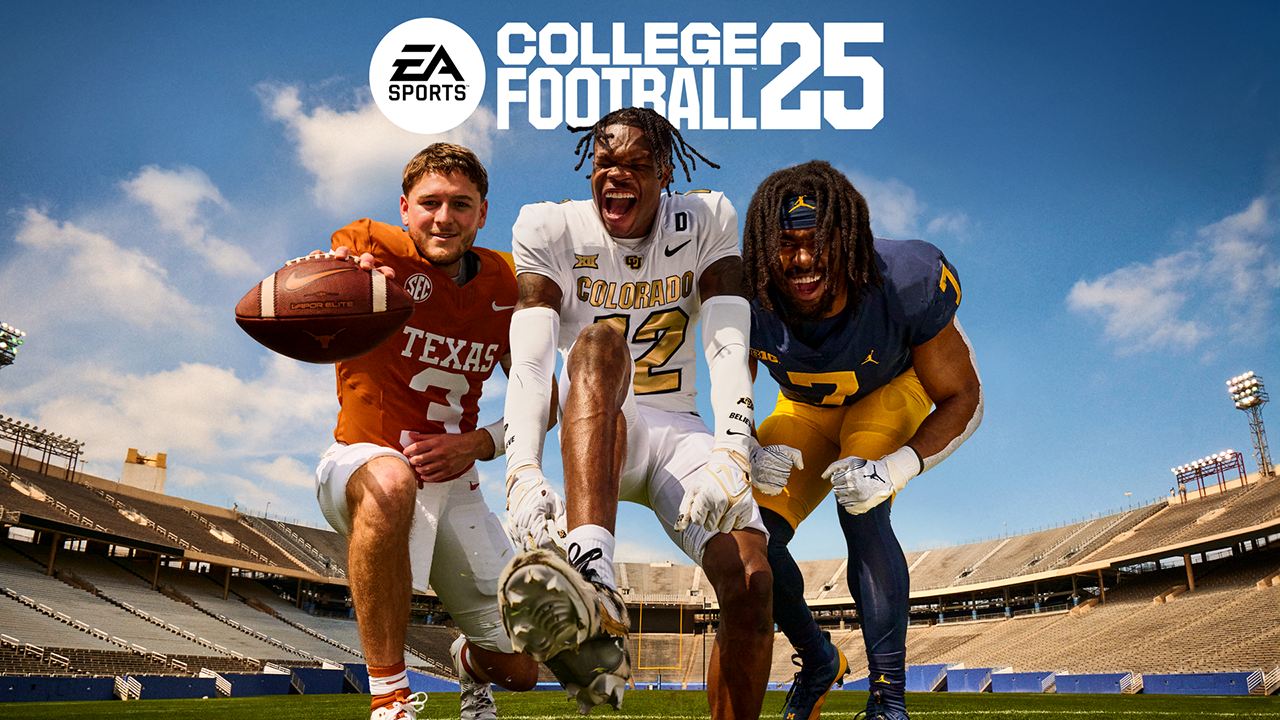
This July, there will be a lot of sports fans tapping back into their childhood.
Earlier this year, EA Sports announced that its College Football video game series will return this year after last being released in 2013.
On Thursday, the brand announced that the game will be available for play on July 19.
The EA Sports College Football 25 cover. (EA Sports)
This year’s video game features three athletes headlining the cover: Texas’ Quinn Ewers, Colorado’s Travis Hunter and Michigan’s Donovan Edwards, the latter of whom had two rushing touchdowns en route to winning the national championship.
Alabama quarterback Jalen Milroe and Carson Beck of Georgia can also be seen, as can Ohio State’s Quinshon Judkins.
The series began in 1993 with the release of Bill Walsh College Football, and the game was released under the legendary coach’s name for two years.
The name changed to College Football USA for the 1996 and 1997 seasons before changing to NCAA Football from 1998 to 2014.
The game was on hiatus for a while due to disputes among EA, the NCAA and college athletes. Each installment since the 1997 version featured a cover athlete as video games normally do. However, the cover athlete wasn’t permitted to be paid for his image and likeness.

A shot of the College Football 25 cover. (EA Sports)
DABO SWINNEY DISCUSSES WHY CLEMSON HAS BEEN ONLY SCHOOL THAT HASN’T LANDED TRANSFER VIA PORTAL
Plus, in each installment, game players were unable to see the names of the athletes when controlling them. Instead, Reggie Bush, for example, would be listed as “HB No. 5” and Tim Tebow as “QB No. 15.”
But now, with name, image and likeness running rampant, game players will know exactly who is on the field, rather than just a position and number.
EA Sports announced a return of the game three years ago and even said a game would be released last summer, but it did not happen.
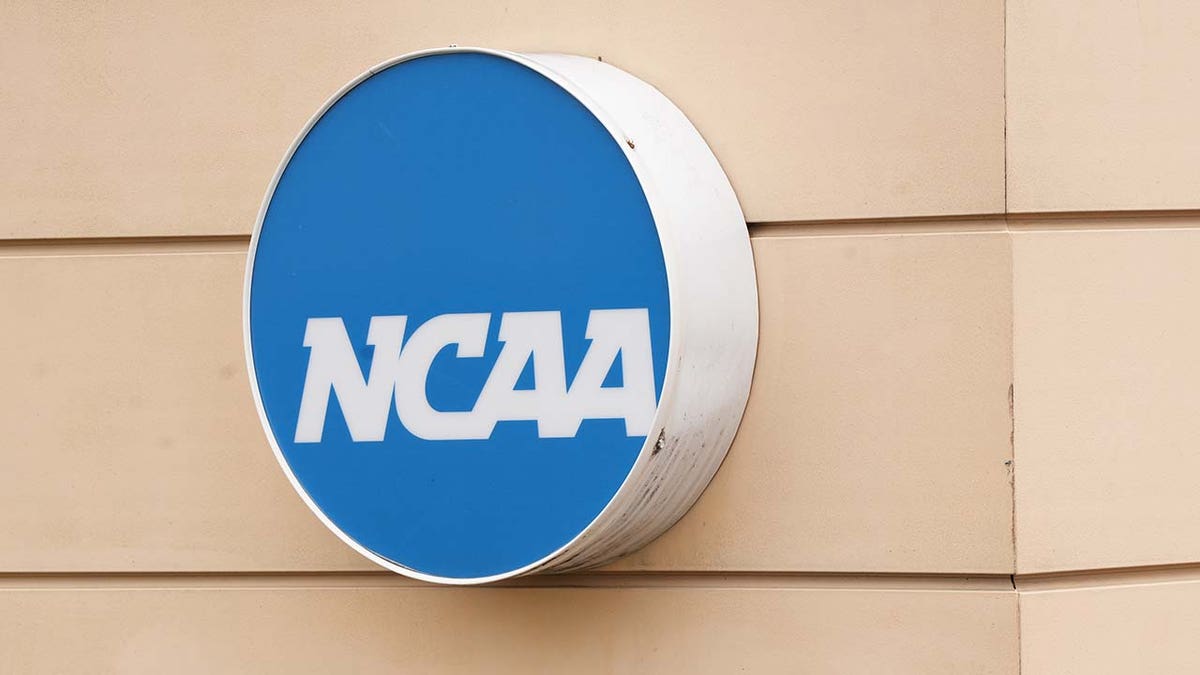
(Mitchell Layton/Getty Images)
The last cover athlete was Denard Robinson of the Michigan Wolverines.
Follow Fox News Digital’s sports coverage on X and subscribe to the Fox News Sports Huddle newsletter.
-

 Politics1 week ago
Politics1 week ago'You need to stop': Gov. Noem lashes out during heated interview over book anecdote about killing dog
-

 News1 week ago
News1 week agoMan, 75, confesses to killing wife in hospital because he couldn’t afford her care, court documents say
-

 Politics1 week ago
Politics1 week agoRFK Jr said a worm ate part of his brain and died in his head
-

 World1 week ago
World1 week agoPentagon chief confirms US pause on weapons shipment to Israel
-

 Politics1 week ago
Politics1 week agoHere's what GOP rebels want from Johnson amid threats to oust him from speakership
-

 World1 week ago
World1 week agoPro-Palestine protests: How some universities reached deals with students
-

 World1 week ago
World1 week agoConvicted MEP's expense claims must be published: EU court
-

 Politics1 week ago
Politics1 week agoCalifornia Gov Gavin Newsom roasted over video promoting state's ‘record’ tourism: ‘Smoke and mirrors’





